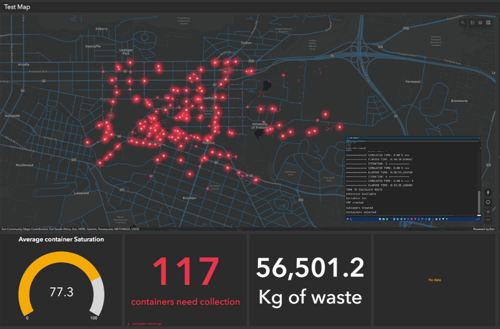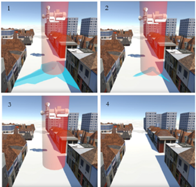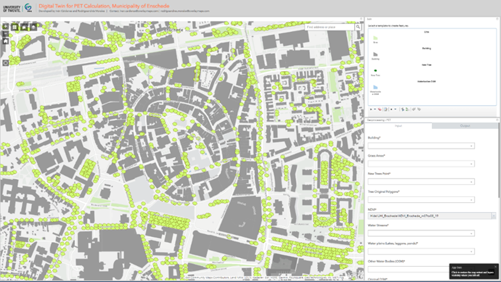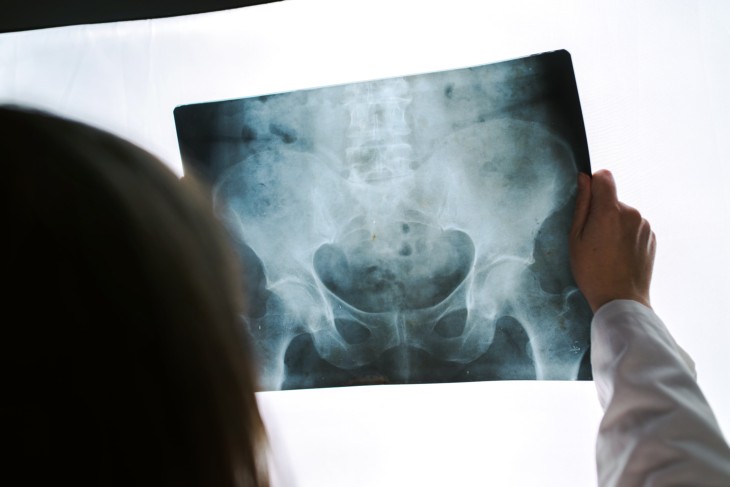City digital twins are virtual replicas of real-world urban environments that can support decision-making through the seamless integration of vast amounts of data. They come from various sources, AI-based data-driven models, and simulation models to provide a detailed and dynamic view of the dynamics of a city's infrastructure, services, and activities.
This innovative concept has gained prominence in the field of urban planning, smart governance, and operational management, offering a powerful tool for city officials, planners, and policy-makers to make informed decisions and contribute to the enhancement of the sustainability of urban living. Computer simulations and artificial intelligence in digital twins help us understand how changes in a city affect the environment, society and economy.
Collaborative efforts
The researchers at the University of Twente have strategically aligned their efforts towards pioneering innovative methodologies. They foster qualities such as competitiveness, compactness, sustainability, inclusivity, and resilience. This has led to the establishment of a collaborative initiative known as the "Digital Twin Geohub." This group includes experts from diverse faculties within the university, bringing together their knowledge and skills to tackle the complex challenges associated with sustainable urban development.
By combining expertise from fields such as civil engineering, artificial intelligence, geoinformation processing and social sciences, the Digital Twin Geohub aims to co-create a digital-twin-based user-centred decision-making ecosystem. This allows academics, practitioners, and decision-makers to harness the power of digital twins in collecting, organising, and analysing heterogeneous data in a single platform to work toward sustainable and resilient cities. The mission of the group is to maximise the societal impact of innovative research by exploring the potential of digital twinning in synergising a research and innovation ecosystem for building multiple helix public-private partnerships.
Read further to find the collaborative outcomes from three recent projects where City Digital Twins have been successfully developed and implemented.
1. A Digital Twin for GroundWater Table (GWT) Monitoring and Control
The project of monitoring groundwater management has been inspired by the shared need for action by the City of Enschede. University of Twente collaborated with the city representatives to find the most suitable and implementable solution for this persistent city challenge. In recent years, frequent and intense droughts and heavy rains have created issues like waterlogging and building floods. Common solutions, such as groundwater control pumps, have fixed capacities that are unsuitable for extreme conditions. Low rainfall can harm vegetation and structures, while heavy rainfall may cause shallow tree roots and basement water ingress, posing damage and flood risks. Balancing these challenges is crucial for effective urban groundwater management.
2. Digital Twins for Physiological Equivalent Temperature (PET) Calculation
The demand for accurate thermal comfort assessment arises from urbanisation, climate change, and the Urban Heat Island effect. The presented project is a collaborative work of the University of Twente, VU University and Enschede Municipality. It presents an automatic calculation of the physiological equivalent temperature, based on digital twin concepts. It quantifies the combined impact of air temperature, humidity, wind speed, and solar radiation on human thermal perception. This metric, encompassing various environmental variables, empowers urban planners, architects, and environmental scientists to design spaces prioritising human comfort and health.
3. Urban Digital Twin for Solid Waste Management
Urban sustainability encounters a significant challenge in dealing with the extensive production of solid waste, which surpasses 2 billion metric tons globally each year. Despite substantial waste generation and constrained collection services, South Africa expressed a clear demand for an innovative solution. Hence, a prototype for a Waste Management Digital Twin has been developed in collaboration with the University of Pretoria, encompassing stakeholder prioritisation, citizen involvement in waste site identification, simulations for waste generation, optimisation of waste collection routes, and a control dashboard. This prototype seamlessly integrates real-time monitoring, streamlined collection routes, and citizen engagement through the open-source tool Epicollect5.










